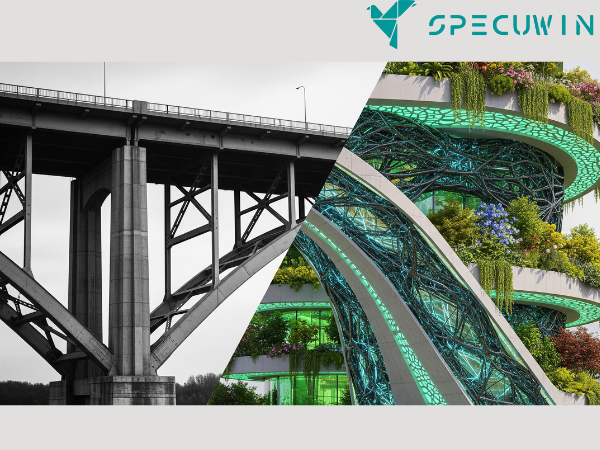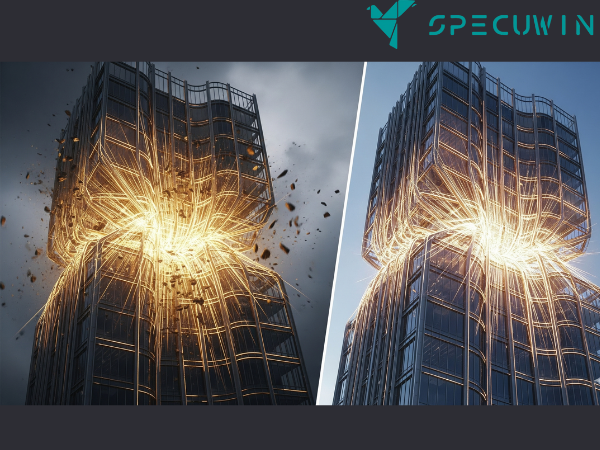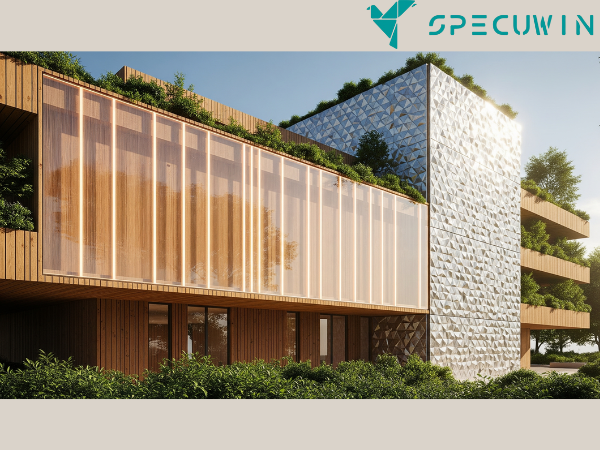For centuries, concrete and steel have been the unquestionable champions of construction. Their strength, durability, and reliability shaped our skylines and infrastructure. From towering skyscrapers to intricate bridges, these traditional materials served us well. However, a new generation of innovative materials is emerging. This shift is driven by a global need for greater sustainability and resilience. It also aims for a more efficient use of resources. These innovative materials in structural engineering are not just simple upgrades. They are fundamentally changing how we design, build, and maintain our world.
We are seeing a move from self-healing concrete that mends its own cracks to ultra-lightweight composites. These advancements are paving the way for structures that are stronger, smarter, and more environmentally friendly. This blog post explores the game-changing materials that are setting a new standard for modern structural design. We will look at their properties, applications, and impact.

The Rise of Smart & Self-Healing Innovative Materials
Structural engineering is entering a new era. Buildings are no longer static. Instead, they are dynamic and responsive systems that can react to their environment and repair themselves. This is all thanks to a remarkable class of materials known as smart materials. These materials can change their properties in response to stimuli like temperature, pressure, or moisture. This enhances both safety and efficiency.
Self-Healing Concrete: The Ultimate Solution to Cracks
One of the most exciting developments is self-healing concrete. Cracks, even micro-cracks, are a major challenge in concrete structures. They can lead to moisture infiltration and corrosion of the steel reinforcement. This compromises the structure’s integrity and lifespan. Self-healing concrete is designed to automatically repair these small cracks as they form.
We achieve this by putting encapsulated healing agents, like specific bacteria, into the concrete mix. Water activates the bacteria when it penetrates a crack. The bacteria then produce limestone, a concrete-like substance that seals the crack. This process extends the service life of the structure. It also significantly reduces the need for costly maintenance. The potential applications are vast. They include underground tunnels, foundations, and bridges in coastal areas.
Read more on:- From Risk to Resilience: How Engineers are Tackling Climate Change
Shape Memory Alloys for Seismic Resilience
Another key innovation is the use of shape memory alloys (SMAs). These metallic alloys can “remember” their original shape. After being deformed, they can return to their pre-deformation shape when heated. This property is revolutionary for seismic design. By incorporating SMAs into a structure’s frame, engineers can create buildings that can handle the extreme forces of an earthquake. The materials deform to absorb energy and then spring back to their original configuration when the shaking stops. This means less damage, improved safety, and a more resilient built environment.

Lightweight, High-Strength Composites
The quest for materials with an optimal strength-to-weight ratio has driven a revolution in composites. These new materials are a combination of two or more constituents. They have different properties. When combined, they create a superior material. The result is a class of composites that offer great performance. They also drastically reduce a structure’s dead weight.
Read more on:- The Revolutionary Impact of Digital Twins on Facility Management and Operations
Carbon Fiber-Reinforced Polymers (CFRP)
Carbon fiber-reinforced polymers (CFRP) are a prime example. Once confined to aerospace, CFRP is now a staple in construction. It is made by embedding strong carbon fibers within a polymer resin. The material is up to ten times stronger than steel, while weighing much less. This makes CFRP ideal for retrofitting existing structures. It adds load-bearing capacity without significant weight. Unlike steel, carbon fiber resists corrosion when exposed to moisture or chemicals. This makes it a perfect choice for marine structures.
The Promise of 3D Graphene
Another material with incredible potential is 3D graphene. This innovative material is a three-dimensional lattice of graphene sheets. It has a density of only 5% of steel, yet it is 10 times stronger. Its combination of strength, low weight, and electrical conductivity makes it ideal for a wide range of applications. Its use could lead to incredibly lightweight yet robust structures. This opens up new design possibilities that were previously unimaginable with traditional materials.
Sustainable and Eco-Friendly Innovative Materials in Structural Engineering
The construction industry is pushing for greener building practices. This has spurred the development of new materials. These materials minimize environmental impact and reduce a building’s carbon footprint.
- Cross-laminated timber (CLT): CLT is at the forefront of the mass timber movement. It is an engineered wood product. We make it by gluing layers of lumber together at right angles. This creates a strong, stiff, and stable panel. CLT is a renewable resource that sequesters carbon. It provides strength comparable to steel and concrete. It also promotes sustainable forestry practices.
- Transparent wood: This is a revolutionary material. It offers a sustainable alternative to glass and plastic. We make it by removing the opaque lignin from thin strips of wood. We then infuse the remaining cellulose structure with a clear polymer. The resulting material is at least five times stronger and lighter than glass. It is also more thermally efficient, it is made from renewable and biodegradable materials. It offers a great eco-friendly alternative for windows and facades.
- Hydroceramics: This innovative wall system is a leap forward in passive cooling technology. It is a smart material that responds to temperature changes without power. The system uses water-absorbing hydrogels and porous clay panels. When it gets hot, the hydrogel absorbs water and releases it through evaporation. This process passively cools the area by up to 6°C.

The Future of Structural Design with Innovative Materials
These materials are no longer just concepts. We are actively integrating them into real-world projects. They are shaping the future of the built environment. Going forward, the focus will be on creating hybrid material systems. These systems will combine the properties of multiple innovations. For example, a future skyscraper might use a combination of mass timber for its core, carbon fiber-reinforced concrete for high-load areas, and a hydroceramic facade to regulate its temperature.
The integration of nanotechnology will also be a major frontier. We can add materials like carbon nanotubes and graphene to traditional substances. This creates composites with unprecedented strength and functionality. Nanoparticles can enhance the strength of concrete. This improves the performance and lifespan of structures.
Read more on:- Structural Engineering of High-Rise Buildings: Challenges and Solutions
Furthermore, the industry uses advanced computational methods like Building Information Modeling (BIM) to simulate these new materials. This ensures they are used effectively and safely. This synergy between material science and digital technology will truly revolutionize structural engineering. It will allow us to build a more resilient, efficient, and sustainable world.
Frequently Asked Questions (FAQs):-
1. What is the function of the matrix in composite materials?
A. In composites, the matrix binds the reinforcement materials (like fibers) together and distributes the external load to them.
2. What are some advantages of composite materials?
A. Composites offer superior mechanical properties such as high strength, toughness, and good corrosion resistance. They are also lightweight, which leads to a higher strength-to-weight ratio.
3. What is a shape memory alloy?
A. A shape memory alloy is a metallic material that can return to its original shape or size after being deformed, typically when it is heated.
4. How does transparent wood work?
A. Transparent wood is created by removing lignin from balsa wood and replacing it with a transparent polymer like epoxy resin. This process makes the wood translucent while retaining its natural strength and flexibility.
Read More On:-
For more information about engineering, architecture, and the building & construction sector, go through the posts related to the same topic on the Specuwin Blog Page.
Find out more accurately what we are going to take off in the course of applying leading new technologies and urban design at Specuwin.
